As the real-world effects of climate change become more and more (and more and more) apparent, some people seem persistently determined to listen to the gotcha images that clutter up their social feeds, rather than reading the science-informed news.
That’s perhaps understandable, given the real news features so many climate-related disasters that you can put together a top ten of the financial damage caused, people displaced and numbers of deaths in a single year. Real climate news is depressing, so why not seek alternative facts?
As I’ve argued in The Skeptic previously, it is at least possible to convince our insistently incorrect colleagues and relatives to reconsider their positions. Fact checking can have an effect and polite persistence can pay off. With that in mind, I present my top ten infuriating climate change memes, why they’re misleading, and the simple fact check or explanation of their total and utter wrongness.
Misunderstanding how both the sea and photographs work
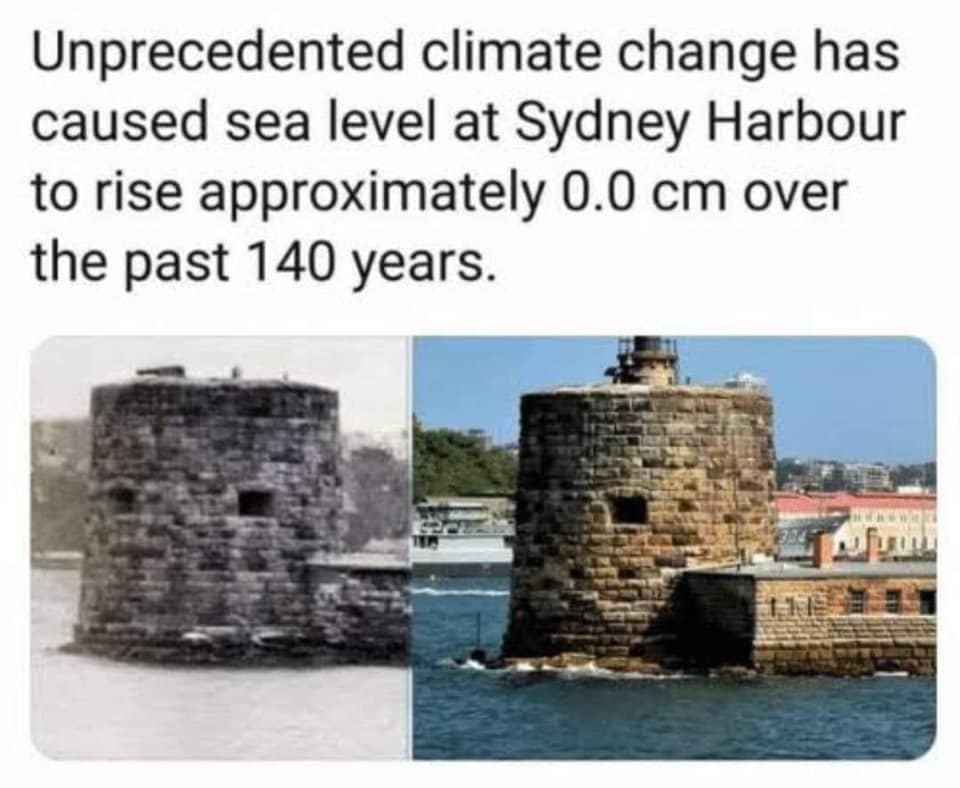
The implication: you can tell sea level hasn’t changed by glancing at two photographs taken from a hundred or so metres away of Fort Denison in Sydney Harbour, therefore sea levels are static.
The truth: two independent tidal gauges – a better measure than eyeballing two undated, unverified photographs – say sea level in Sydney has risen by 12cm in the last century. A rise of 12cm seems unlikely to be visible in photographs.
The astute reader will also note that the tide goes in and out, so no two single photographs can tell you the sea level rise.
This is fine.jpg
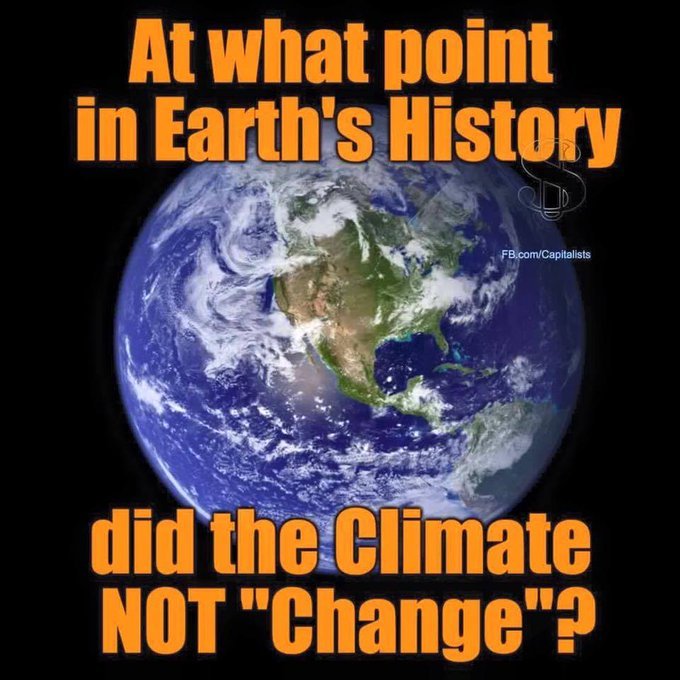
The implication: Earth’s climate has always changed, so why are we all worrying our pretty little heads? Relax, everything is fine, climate change is normal and not something that’s being caused by human activity.
The truth: NASA figures show that global temperatures over the last century – at a time of global industrialisation – have gone up ten times faster than the warming normally experienced when coming out of an ice age over the last million years.
Of course, the climate is changing and always has, but that change is currently a whole lot faster than is normal. Would adherents of this view pour petrol on a house fire, rather than call the fire brigade?
Polar bears, everywhere
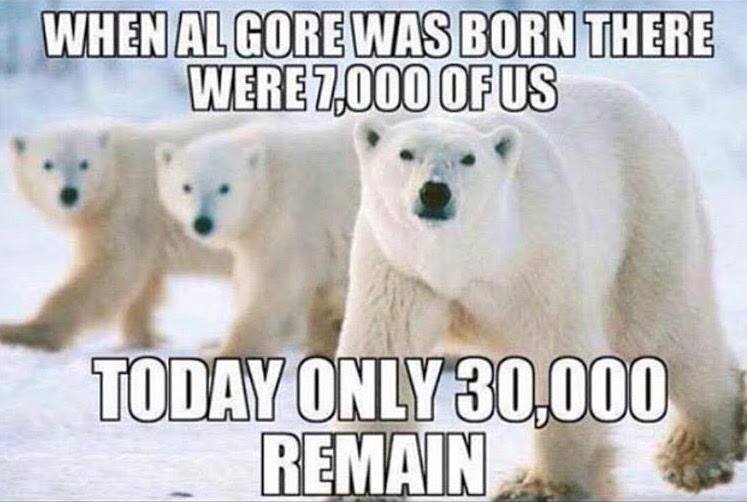
The implication: polar bears aren’t threatened by loss of habitat due to climate change, in fact they’re increasing in numbers!
The truth: nobody knows how many polar bears there were when Al Gore was born in 1948, because nobody was counting polar bears in 1948. There has been some stabilisation and even recovery of polar bears in some regional subpopulations – though not others – but this is more likely due to the 1973 Agreement on the Conservation of Polar Bears, which drastically reduced polar bear hunting. Of course, counting polar bears tells us little about whether sea ice is melting. That’s what actual data is for, and the data is in: arctic sea ice is shrinking by 12.6% per decade.
Where does the 7,000 number even come from? Estimating the number of polar bears is tricky now and was even harder 75 years ago. Polar bear expert Stephen Amstrup calls it a “WAG” – a wild-ass guess; polar bear researcher Andrew Derocher says that the claim of 7,000 polar bears doesn’t have “any scientific credibility”; veteran ecologist Thor Larsen says that “Most data on numbers from the late 1960s and early 1970s were indeed anecdotal.”
Erik the Red photography, for elegant memories of your wedding or special occasion

The implication: Greenland used to be warmer than it is now. This means that climate change is not real.
The truth: Obviously the top image isn’t a startling colour photograph taken nearly 800 years before the invention of photography – and up to 20% of southern Greenland is much more verdant than the bottom image implies – but it is correct to say that Greenland was warmer when first settled by Europeans. Exactly why is unknown, but climate change is about the global picture, not climate fluctuations or localised effects.
It has been speculated that this meme is satire; while this may well have been the intention, you can find it in the wild in articles calling climate change a scam.
Checklist? Checkmate, climate scientists…

The implication: politicians are always coming up with nonsense, it’s just a ruse to raise taxes.
The truth: this one’s a biggie, so to take them in order…
- 1960s – peak oil. Smart people have worried that oil is running out since at least 1874, so this is a perennial concern that far precedes modern ideas about fear-mongering government scientists. Technology, politics and economics are likely to be the big drivers of oil extraction and continued use of hydrocarbon fuels, at least for now.
- 1970s – ice age. A few scientists did predict this. Then they realised they were wrong. Unlike the current consensus on climate change, this was never settled science.
- 1980s – acid rain. This actually demonstrates the opposite point. There was a problem, and as a result many governments introduced strict environmental controls, and the problem largely abated in those regions.
- 1990s – ozone layer. As with acid rain, including this suggests climate change deniers aren’t paying attention. Governments took collective action and the ozone layer is on course to be restored.
- 2000s – climate change. As with acid rain and the ozone layer, this adds a time element (within 10 years) that climate scientists are unlikely to have used with any certainty. This reference seems likely to stem from a politician, Al Gore, mischaracterising a research paper.
Glacier hints
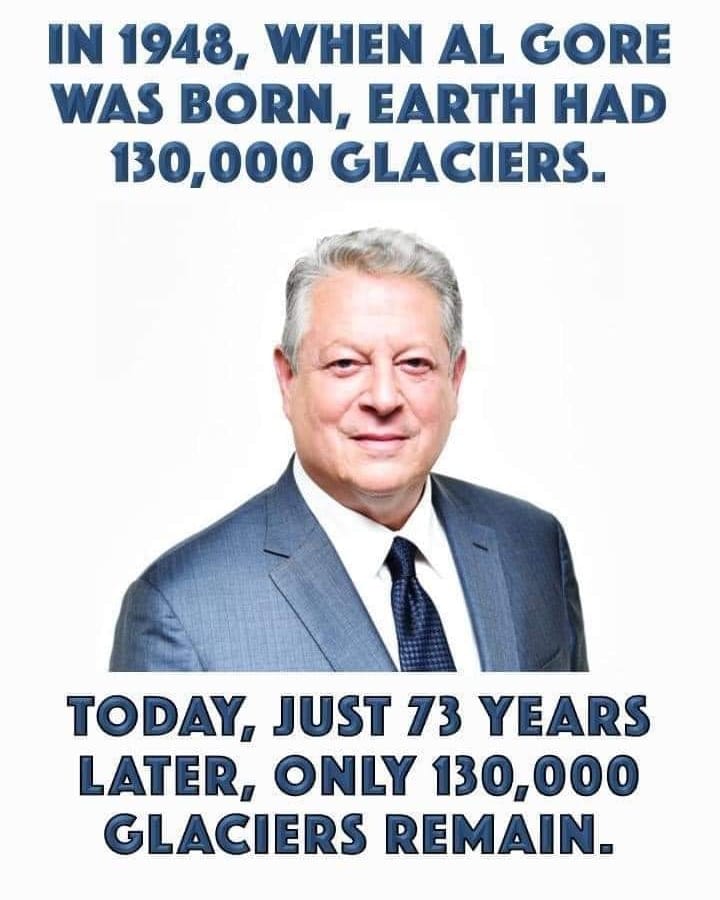
The implication: there’s still ice so climate change isn’t real. With gratuitous Al Gore.
The truth: there are about 198,000 glaciers today; nobody knows how many there were in 1948; the volume of glaciers, not the number, is what’s important to measure with regards to the impact of climate change.
“Look out the window!”
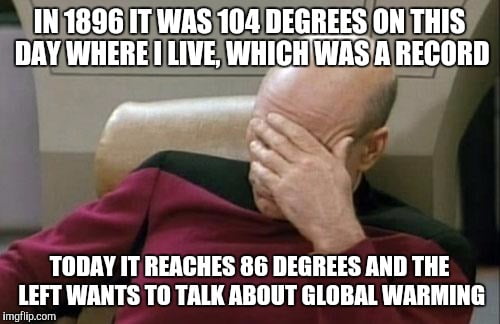
The implication: the weather in my area or on a specific date doesn’t fit the narrative of global warming, therefore global warming isn’t true.
The truth: we all know this by now. Weather isn’t climate, man-made climate change is about the overall pattern, not any given day.
It can be more useful to speak about climate change rather than global warming, but then you get memes like this next one…
A rebranding exercise?
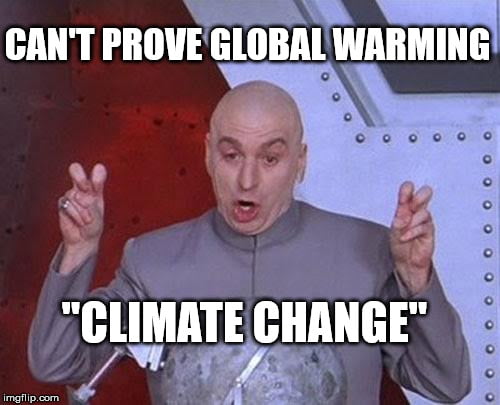
The implication: it wasn’t possible to prove global warming was real so those darned climate change “scientists” started calling it climate change instead.
The truth: global warming refers specifically to “the average global surface temperature increase from human emissions of greenhouse gases” and first appeared in 1975 in a paper which used the words “climatic change” in the title. There is no bait and switch here, both have been used for many decades.
There are reasons why usage switched to climate change rather than global warming, some of which do, as this meme also implies, relate to communications. As human geographer Mick Hume says: “The term ‘global warming’ confuses people because it triggers thoughts about warmth, and it sort of lends itself to misinterpretation when it also impacts the cold.”
But there are also plenty of people who feel the term climate change is too bland, too neutral and not urgent enough, hence the switch by some media outlets to climate emergency, crisis or breakdown.
“A very naughty boy”
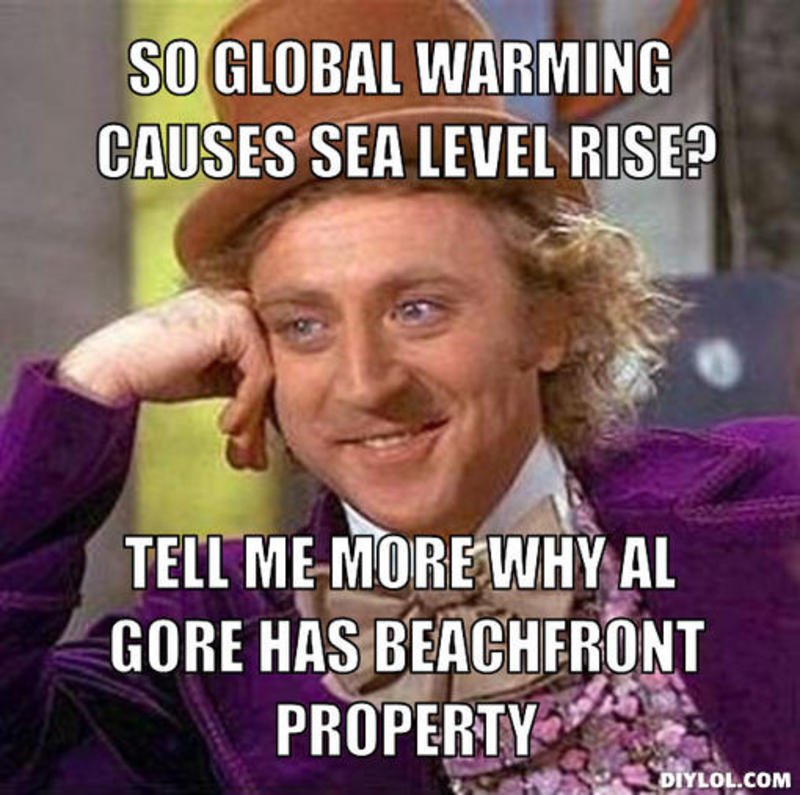
The implication: Al Gore and other leading figures own beach-front property, so sea levels aren’t going to rise and he and other climate activists are having you on.
The truth: coastal sea level in the USA is expected to rise by around 30cm by 2050, which is unlikely to be specifically catastrophic for his ocean view property, and statistically speaking Al Gore is unlikely to live that long. He also, presumably, has both good insurance and other homes, which contrasts starkly with 11% of Bangladesh which may well be underwater in the same time period: sea level is not rising evenly around the world and will be very unequal in its impacts.
All the above considered, sometimes people act in ways which don’t seem to match their words, and Al Gore isn’t the climate change messiah. His real estate choices do not change the evidence on anthropogenic climate change.
Plymouth Rock, around, the dock tonight…
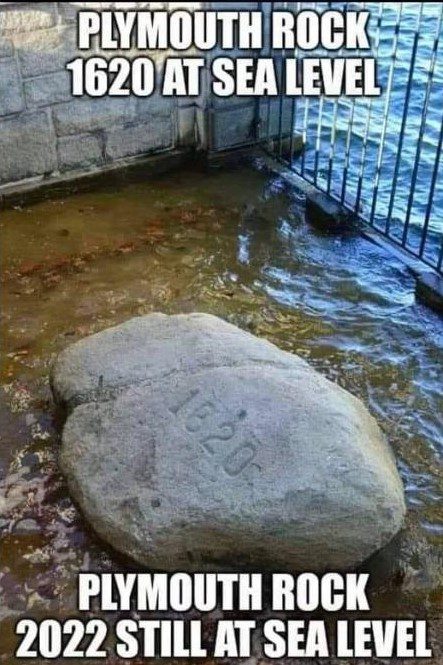
The implication: a key moment in history can’t be disputed: the sea level hasn’t risen in 400 years. Climate change is a lie.
The truth: obviously everything mentioned above about the Sydney Harbour meme already counts this out from any actual relevance to climate change, but you can add in a special level of incompetence on this one as Plymouth Rock has been moved and even broken numerous times since 1620.
Conclusion
Some people may be engaging in climate change denialism to “avoid a psychologically uncomfortable truth,” but the real-world effects of climate change are increasingly hard to ignore. Only time will tell if some of our friends, family and colleagues are still huddled around screens chuckling at misleading ‘Gotchas’ while the world outside burns.



